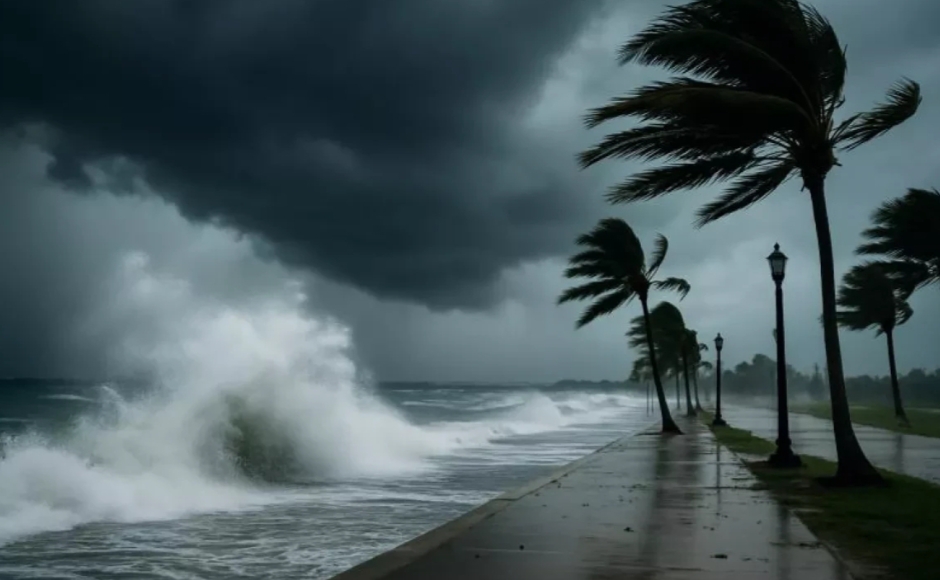Hurricane Melissa reached Category 5 strength with 185 mph winds and 892 mb pressure, tying the 1935 Labor Day Hurricane as one of the most intense Atlantic storms ever recorded. Jamaica faces catastrophic flooding and storm surge.

A nearly perfect alignment of environmental and atmospheric conditions has enabled Hurricane Melissa to become one of the most intense Atlantic storms ever recorded.
On October 28, Hurricane Melissa reached Category 5 status with sustained winds of 185 miles per hour and a central pressure of 892 millibars, placing it in a tie with the 1935 Labor Day Hurricane as the third most intense storm ever documented in the Atlantic Ocean.
The 1935 storm caused catastrophic destruction and wiped out the Florida Keys, setting a historical benchmark for Atlantic hurricane intensity.
Meteorological Conditions Behind Melissa’s Rapid Intensification
Meteorologists at the National Hurricane Center (NHC) have identified several critical factors that contributed to Melissa’s extreme intensification. Exceptionally warm sea surface temperatures, high ocean heat content, minimal wind shear, and abundant mid-level moisture created an environment ideal for rapid strengthening.
The storm developed a highly organized structure with a symmetrical eye and compact eyewall, characteristics associated with the most powerful tropical cyclones.
The lack of upper-level wind interference allowed the system to consolidate energy efficiently, maintaining its Category 5 intensity for an extended duration.
Increased Threat to Jamaica and Surrounding Islands
The National Hurricane Center reported that Hurricane Melissa was moving slower than expected as it approached Jamaica, significantly raising the risk of catastrophic flooding and storm surge.
Slow-moving hurricanes are capable of producing extreme rainfall totals, as prolonged rainfall saturates the ground and overwhelms natural drainage systems.
The Hurricane Center warned that Melissa’s storm surge could reach up to 13 feet along Jamaica’s southern coastline, while in Montego Bay, on the northwest coast, surges could rise to 4 feet.
- Modifications That Homes in Hurricane-Prone Areas Need
- Similarities between Hurricane Matthew and Hurricane Andrew
- The dreadful Disaster of Hurricane Patricia in Mexico
The combination of storm surge and heavy rain may prevent rainwater from draining into the sea, leading to flash floods and landslides in mountainous regions.
Impact and Early Reports of Damage
As of Monday night, Jamaica’s Minister of Health, Christopher Tufton, confirmed that three people had died in connection with hurricane preparations.
Early images emerging from St. Catherine Parish on Jamaica’s southeastern coast show severe destruction, including uprooted trees, damaged roofs, and collapsed fences.
The National Hurricane Center reported that Hurricane Melissa made landfall on Jamaica’s southwestern coast as a Category 5 hurricane, warning that “total structural failure” was likely in areas closest to the storm’s eyewall. The scale of the damage across southern Jamaica is still being assessed, with emergency crews struggling to reach several affected communities.
U.S. State Department Warning and Evacuation Efforts
The U.S. State Department issued a warning urging American citizens in the storm’s path to evacuate or prepare to shelter in place.
“If you’re in an area projected to be in the storm’s path, depart ASAP if still possible,” the State Department said in a message posted to X. “Americans who decide to remain should make preparations to shelter in place.”
Hurricane Melissa is expected to continue northward toward eastern Cuba and the southeastern Bahamas in the coming days.
Forecasts suggest that while some weakening may occur due to land interaction, the storm could maintain major hurricane strength as it moves over warm Atlantic waters.
Historical and Scientific Context
With a central pressure of 892 millibars, Hurricane Melissa ranks among the most intense Atlantic hurricanes ever recorded, alongside Hurricane Wilma (2005), Hurricane Gilbert (1988), and the 1935 Labor Day Hurricane.
Meteorologists note that such intense storms reflect ongoing changes in oceanic heat patterns. Record-high sea surface temperatures across the Atlantic and Caribbean have provided increased thermal energy for tropical cyclone formation and rapid intensification.
Climate researchers continue to study how rising global temperatures contribute to these record-breaking hurricanes.
Higher ocean temperatures increase evaporation and atmospheric moisture, intensifying rainfall and wind potential during storm formation.
Projected Path and Continuing Hazards
The National Hurricane Center forecasts that Hurricane Melissa will bring continued heavy rainfall, flash flooding, and strong winds to parts of Cuba and the Bahamas.
Coastal communities have been urged to prepare for storm surges and possible infrastructure damage.
Emergency response teams across the Caribbean are deploying to assist with relief efforts as the full impact of the storm becomes clearer.
Early satellite data and damage reports indicate that Hurricane Melissa will be remembered as one of the most destructive and scientifically significant storms in modern Atlantic history.
